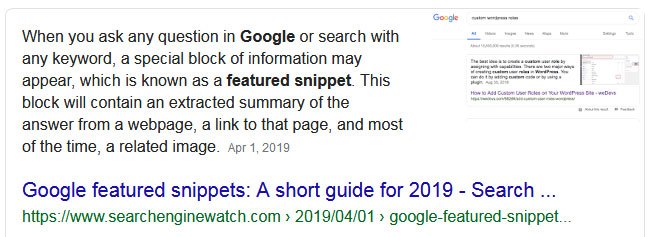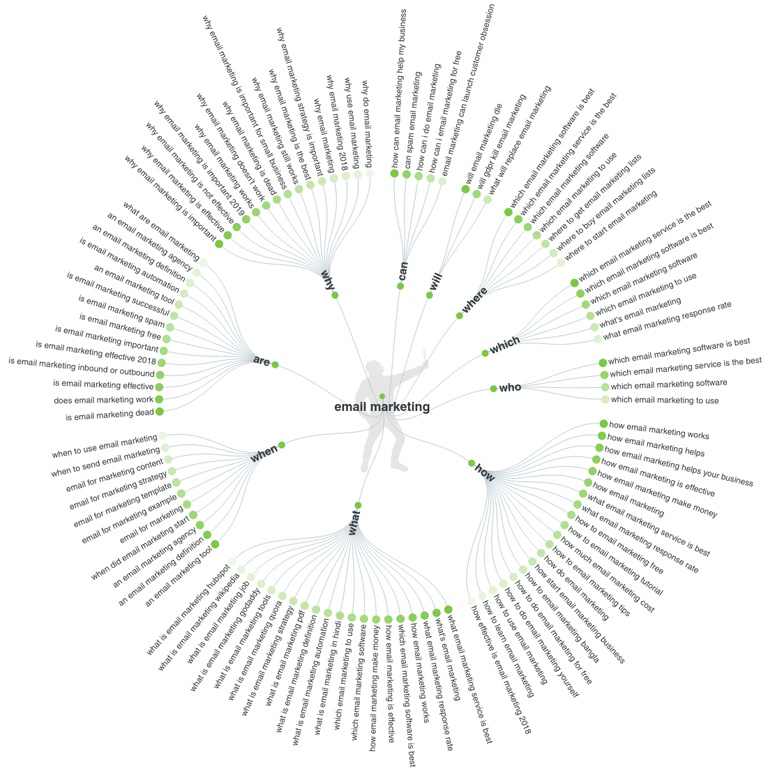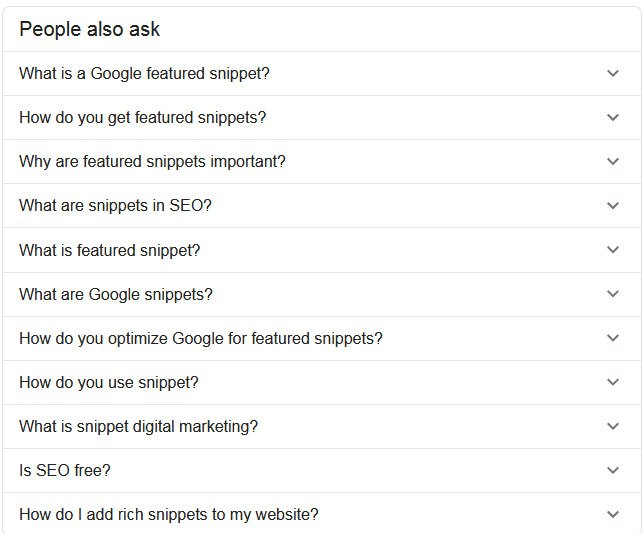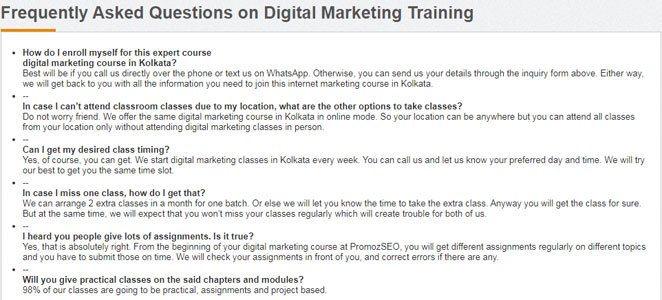How to Rank in Google’s Featured Snippets (aka Answer Box or Position Zero)?

Have you been trying to get your business to rank at the number 1 position on Google’s search results?
If you have ever gone for organic traffic by using search engine optimization, then you already know these three things:
- Getting your business in Google’s top 10 results for competitive niches may be really difficult.
- Getting to rank 1 from rank 10 is even harder and time-consuming.
- Once you get to the top, there is no guarantee that you will stay there for long.
You are tired and frustrated because none of the great SEO gurus seem to have a surefire answer.
But what if I told you that there is a simpler way to avoid all this hassle, still get great rankings, and attract a lot of organic traffic along the way?
That’s right – I’m talking about the Featured Snippets. The elusive Rank 0 on Google!
What is a Google Featured Snippet?
Google’s Featured Snippets are the search results that get featured at the top of the page – even before the #1 organic result! It is also known as Position Zero or Google’s Answer Box (a very common type of Featured Snippet).
The first thing that you most of the time see these days on Google search is a Featured Snippet.
The best part? You don’t have to be the #1 organic result to get into the Featured Snippet!
I know exactly what you’re thinking.
How come there isn’t a Featured Snippet for every search query? Do I have to invest a lot to get Featured Snippets? How do I even begin to get into the Featured Snippet?
If these are your top questions, welcome to this post. Please go through for all the answers!
There isn’t a Featured Snippet for every search query because not everyone knows how to optimize for it. That’s right – you need to optimize your content to get into the Featured Snippets. Until and unless Google finds the most suitable result or answer for one search query, it won’t show the Featured Snippet. Apart from this generally Google doesn’t show Featured Snippet for transactional keyword searches.
The best part is – It’s not a huge investment. You can just tweak your existing content to get into the Featured Snippet, provided your post or page is already ranking among the first few organic search results.
Types of Featured Snippets
- List Featured Snippets
This type of Featured Snippet shows a list of content that provides answers to one or multiple questions.
- Paragraph Featured Snippets
Unlike the list Featured Snippets, paragraph Featured Snippets generally shows a brief paragraph of content that tries to answer the question asked by the searcher.
- Table Featured Snippets
Table Featured Snippets generally show data in table structured format.
Why are Featured Snippets Important and Why to Rank in Featured Snippets?
There are a ton of reasons why you would want to rank in a Featured Snippet. (even if you’re ranking at the top)
Like I said before, Featured Snippets open up wild possibilities in terms of traffic, brand presence, and growth for any business.
Even more importantly, this is something that your competitors aren’t optimizing for (yet).
Let’s dive right into the 3 most important reasons to invest in ranking at Position Zero on Google.
- Gets more traffic than the top organic result
Have you ever noticed how the Featured Snippet is clearly different from the rest of the search results? Because it is so clearly highlighted and positioned above the first result, the Featured Snippet steals a lot of traffic from the #1 organic result.
But all that was just from a desktop search viewpoint. When it comes to mobile, the majority of the entire screen is taken up by the snippet. In some cases where the snippet is rich and includes images or a video as well, the entire real estate is taken up by it.
With so many people using mobile search, this is one of the most powerful ways to dominate the organic search results.
- Helps in voice SEO
Voice searches are becoming increasingly common worldwide and optimizing for voice search is usually based on creating conversational content. In other words, you need to address natural language queries to optimize for voice search.
As it turns out, optimizing for the Featured Snippet is based on the same ideology as voice search results!
So, if you can optimize for the Featured Snippet, you automatically start getting traffic from voice searches.
- Helps in branding and authority building
What is the first thing that you think of when you see a Featured Snippet?
“Wow! This business has a Featured Snippet. They must know what they’re doing. Let me check them out!”
Am I right?
That is exactly what your online visitors are going to think once they find your website in Featured Snippet. In other words, you instantly get seen as a figure of authority and trust in your field.
How to Start Optimizing for Google’s Featured Snippets, the Position Zero
I know, I know – this is all great, but how can you get started, right? How do you optimize Google for Featured Snippets?
Follow along – the rest of this blog will teach you step-by-step on how to optimize your content for Featured Snippets. You can do this for your existing content as well to get a lot of extra search traffic from older posts.
1. List Question-Based Keywords After Doing a Thorough Keyword Analysis
This gets said a lot, but people don’t do their keyword research well enough. What’s interesting is that the idea behind keyword research for Featured Snippets is to target real questions your audiences are already asking on Google on a given topic.
Google always wants to serve the best possible answer to each search query. So, by targeting and answering real questions, you can actually get into the Featured Snippets without ever having to get to rank at #1!
Here are 3 Places where you can find lots of great questions in almost any niche:
Questions by Quora users related to Google’s Featured Snippet ranking.
Questions and discussions on Reddit related to Google’s Featured Snippet Ranking.
List of all questions on AnsweThePublic.com related to email marketing.
Besides this, you can use a number of free keyword tools that can dig up question-type keywords, exact-match variations, LSI search queries, etc.
2. Get More Question-Based Key-phrases from Google’s “People Also Ask” Box
One of the richest resources for ranking on Google is Google itself. Take the search query that you are trying to rank for and search it on Google. Then check out the “People Also Ask” box for more correlated questions to target.
Many of the questions that you will find using this simple trick are questions that people are already asking and are highly relevant to the search query that you want to rank for.
The point is not just using the Q&A based keywords on your content but to answer the questions in detail and in-depth.
3. Use of a Few Words are More Likely to Rank Your Content Faster in Google’s Featured Snippet
Keywords are still important. Only, not in the way you think. Of course, your focus keyword is a major player in your SEO efforts. The question-based keyword phrases will help you get specific hits too. But what words can trigger a Featured Snippet?
Here’s the gist:
Go back to the inverted pyramid style of writing. The words that trigger Featured Snippets most often are who, what, when, where, why, and how. Basically, any of these questions-based search queries can trigger a Featured Snippet.
4. Adapt the Content First Strategy
The “Content First Strategy” is something that almost all authority bloggers and brands pursue. This is a tried and tested way to keep readers engaged and to boost your content visibility for sure.
We all know that content is the undisputed king of internet marketing. Therefore, giving it the most priority is the best strategy a brand can follow and practice.
Here’s how it goes:
- Step 1: Include the most important elements and details at the beginning of your content. This is the place to answer details such as who, what, when, where, why, and how. For general blog posts, the same process can be followed and applied.
- Step 2: More in-depth details go into the core content portion underneath the Step 1 section. Make sure to be as detailed as possible. The idea is to get people to keep reading your content. And you can do it by answering their questions in detail.
- Step 3: Background info and Call-to-Actions come at last. What do you want people to do next? Where do you want them to go and why?
Using this simple method you can really improve your content quality and since it follows a question-answer pattern, this will help you get into the Featured Snippets as well.
5. Content and HTML Formatting Should be Taken Care of from the Beginning
Let’s get real for a minute here. Google is a network of computers running a bunch of programs and algorithms. There is no point in creating content and presenting it in a way that Google won’t be able to understand and index.
It’s as simple as that. The proper content and HTML formatting is really important for Featured Snippet ranking.
- Use a single H1 tag and break the rest of your information into sub-headers. And follow the right header (H2 till H6) hierarchy.
- If necessary, use a table of contents.
- Use data, charts to support your content and question-answers.
- Break up your content into multiple lists (li) using bullet points (ul – unordered list) and numbered points (ol – ordered list).
- Use images, video, infographics, podcasts, and other rich multimedia files to strengthen the content.
The idea is to make your content so easy to understand that even machines can follow along.
6. Analyze the Content Readability before Publishing It on the Website
There is an important reason why major SEO plugins and marketing software keep asking everyone to focus on content’s readability. Now, there are three ways to approach readability issues:
- Page-Level Readability: This deals with structuring your content using the right format.
- Paragraph Level Readability: Each paragraph needs to be bite-sized and scannable.
- Sentence Level Readability: Each sentence needs to be short, simple, in active voice form, and purposeful.
Ideally, your content paragraphs should not be more than 150 words each. This recommendation is given by Yoast SEO.
Personally, I can tell you for certain that there’s no way to be exact with that number when writing. What you can do is keep each paragraph as short as possible. Where it is feasible, you can even break your paragraphs into one-liners.
Remember, short paragraphs make the content more human-readable, usually keep readers more engaged, and finally reduce the bounce rate and pogosticking which in return boosts the organic ranking.
7. Focus on Your Blog Contents’ Formatting
The basic idea behind formatting extends to your blog posts as well. Just because your blog post is not a landing page doesn’t mean that you shouldn’t structure it just as well as you would a landing page.
In fact, you get a lot more freedom with regards to a blog post to include question-answers into your content. So, chances are that your blogs will get into the Featured Snippets much more easily.
Just use the same formatting philosophy as a landing page and you’re golden.
8. Rank on the First Page of Google’s Organic Search Results
Here’s the deal – you can optimize your website and contents for Featured Snippets but, if Google doesn’t see you as a credible source, you will never be featured.
So, what can you do? Simple – keep optimizing for the #1 position at the same time. The higher your organic ranking, the easier it is for you to get featured by Google on its Answer Box.
The same rules apply:
- Create great content consistently
- Dive deep into branding
- Build powerful backlinks from relevant and high authority sources
Just keep doing what you are already doing for your website’s SEO.
9. Include Topical Q&A, FAQ Section or Dedicated FAQ Page
It’s great if you can naturally include questions into your content. But there are some cases where it’s just not feasible.
So, what can you do?
Simple – just add an FAQ page to your site. Every time you find the opportunity to do so, link your pages internally from within your FAQ page.
Besides, you should include an FAQ section on each of your landing pages to help your customers get all the answers to the questions that they might have in their minds.
10. Use Structured Data
When a question was asked to John Mueller regarding a particular schema structured data that may help to rank in Google’ Featured Snippets, he replied “I don’t know. I can’t think of anything offhand.”
However, if you want to rank at Google’s Position Zero, then ideally you should use befitting structured data on your website and for its contents. Structured data helps Google to understand and index the content better which in turn helps in organic and voice search rankings (http://pending.schema.org/speakable).
Similarly, using the right structured data may also help you rank on Google’s Featured Snippet.
11. Build Internal Links and Use Named Anchors to Link Multiple Sections of a Page
Internal linking has always been essential for SEO and ranking. Logical internal links from content (contextual) can make a big difference in organic and Google’s Answer Box ranking.
Therefore, if you aren’t still contextually linking internal pages, please make it a habit. Just remember to link contents (pages) that have some correlation and relevancy. On the other side, don’t overdo it breaking the user experience.
Additionally, named anchors are used for linking multiple sections of page content and are useful for rich snippets and sitelinks. Likewise, using named anchors for the “table of contents” may help in ranking in Featured Snippets as well.
Over to You
That’s all folks! Hope you found this blog post useful. Let us know in the comments below what you liked most about it. Are there some tricks you have used to rank in Google’s Featured Snippets that we didn’t cover here? Let us know! Also, if you like this blog, please share it with more people. We’ll see you next time!
An advanced All-in-One Digital Marketing Course.
Mentored by Mr. Soumya Roy, the Founder, CEO of PromozSEO Web Marketing Academy.
- Reasons Your Business Needs to be on Instagram - September 16, 2021
- 7 Reasons Your Business Should Invest in Professional Content Creation - August 12, 2021
- 5 Ways You Can Improve Your Website’s Existing Backlinks - April 30, 2021














